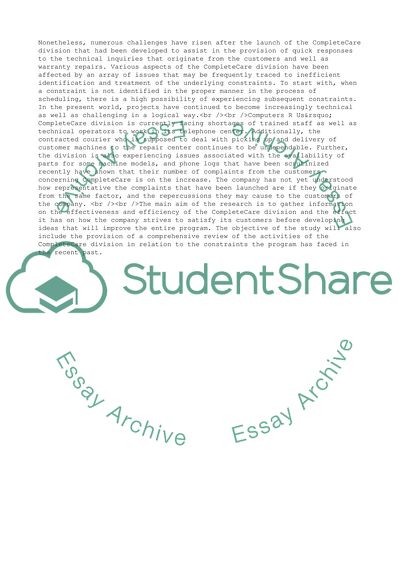Cite this document
(Effectiveness and Efficiency of the CompleteCare Division Research Proposal Example | Topics and Well Written Essays - 1750 words, n.d.)
Effectiveness and Efficiency of the CompleteCare Division Research Proposal Example | Topics and Well Written Essays - 1750 words. https://studentshare.org/business/1862885-computers-r-us
Effectiveness and Efficiency of the CompleteCare Division Research Proposal Example | Topics and Well Written Essays - 1750 words. https://studentshare.org/business/1862885-computers-r-us
(Effectiveness and Efficiency of the CompleteCare Division Research Proposal Example | Topics and Well Written Essays - 1750 Words)
Effectiveness and Efficiency of the CompleteCare Division Research Proposal Example | Topics and Well Written Essays - 1750 Words. https://studentshare.org/business/1862885-computers-r-us.
Effectiveness and Efficiency of the CompleteCare Division Research Proposal Example | Topics and Well Written Essays - 1750 Words. https://studentshare.org/business/1862885-computers-r-us.
“Effectiveness and Efficiency of the CompleteCare Division Research Proposal Example | Topics and Well Written Essays - 1750 Words”. https://studentshare.org/business/1862885-computers-r-us.


